The Noblest Car Fans Love Citroën, And Other Citroën Rendezvous Dispatches

It’s been almost twenty years since France officially declined to join George W. Bush’s Iraq War. While its refusal to sign on to the epic American misadventure based upon non-existent weapons of mass destruction initially earned the French considerable opprobrium on these shores – Freedom Fries, anyone? – today the attitude is more one of the “France, who?” variety. To fly the French flag in America now is more an act of curiosity than one of sedition.
When it comes to French automobiles in the U.S., so it has always been, though things have gotten worse. Despite French brands like Peugeot and Citroën’s significant roles in the fortunes of Stellantis -- the name given to the 2020 merger of Italo-American FCA and French PSA that formed the world’s fourth largest automaker-- the new company has chosen not to grace us Yanks with its French brands, which exited these shores in 1992 (Peugeot) and 1974 (Citroën.) Instead, the combine has chosen instead to reinforce our sorry impression of European industry with Italy’s ailing Fiat and always struggling Alfa Romeo, while relying on American brands Jeep, RAM, Dodge and Chrysler (and mostly the first two) for the bulk of its profit. Likewise French giant Renault, burned twice before in the USA and last seen selling new cars here in 1987, has chosen to focus its energy in the Land of the Free on the offerings of its not always beloved corporate roommate, Nissan.
Despite it all, Gallic machinery continues to claim a small if enduringly loyal following in America. For proof and a quick dip into the soupe française that we find ourselves missing more and more as new cars become increasingly anodyne and national-origin free, there was no better prescription last weekend than to take the cure with a trip to Ballston, New York, not far from the venerable spa town of Saratoga Springs, for the annual Citroën Rendezvous. An event catering to owners and fans in the Northeast whose 2022 gathering some told us was the largest French car shindig on these shores, ever, with more than 200 cars in attendance, was by any measure a rollicking success.
A quick dip into the impressive field on an unseasonably chilly Saturday reminded fans of French style and idiosyncratic but clever engineering not just how much has been lost but also of how much has been preserved.
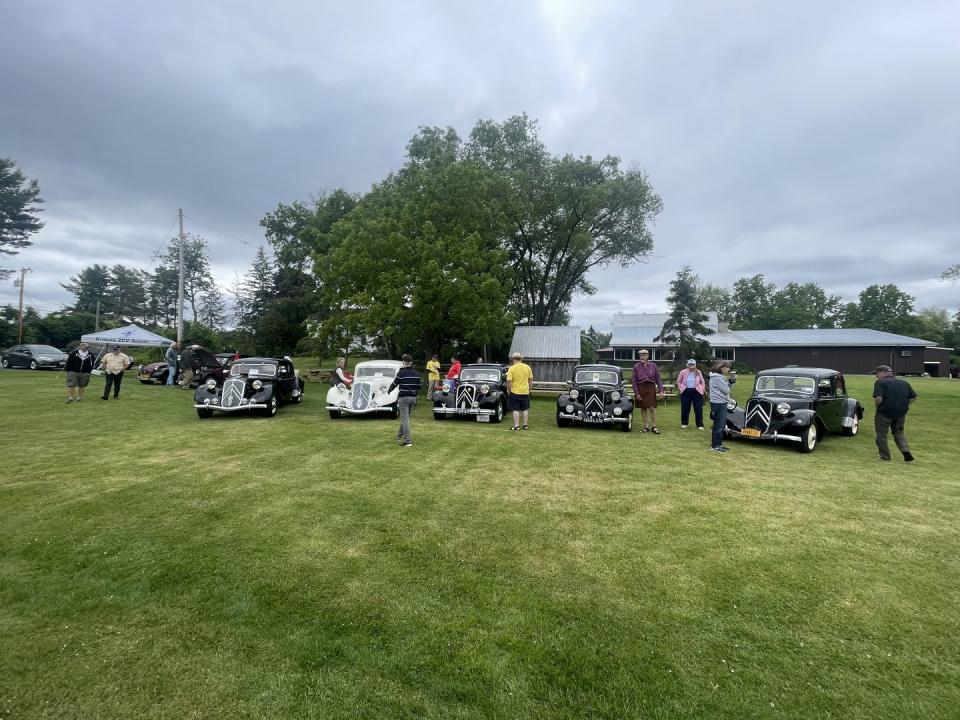
To begin at the beginning, the oldest cars in attendance were the Traction Avants, introduced in 1934 by company founder André Citroën. Though the massive investment in the new model would soon see him losing control of the company he’d founded in 1919, the Traction sold well into the 1950s, in Legere (light) or larger Normale configurations, sailing for decades on the universal wonder that greeted its release, not just for its revolutionary front-wheel drive, but also for its strong and space efficient unit body construction--a party trick rolled out by the Budd Company of Philadelphia but first employed by the French. Indeed, the formula that André Lefèbvre, the project’s engineer, laid down–with long travel suspension by torsion bar, hydraulic brakes and many other modern comforts, all dressed up in a simple but elegant package, thanks to designer Flamino Bertoni, (no relation to the Italian design house that would later go on to do much work for Citroën)--laid a path the company followed for the next half century or more.

The Traction was followed chronologically and spiritually by Citroën’s greatest hits, the humble but scrappy 2CV, aka Deux Chevaux (or two horses,) and the DS, also styled by Bertoni and arguably the greatest design icon in automotive history. Both were well represented on the field, with 2CVs spanning much, if not all, of its incredible 42-year production run (1948-1990) and enough DS’s to occupy the mind for days past our visit, pondering the evolution of a car whose splendid shape, many varieties, monocoque construction with lightweight, non-stressed panels bolted on, all-wheel inboard disc brakes and self-leveling, hydro-pneumatic suspension continue to fascinate, generation after generation.
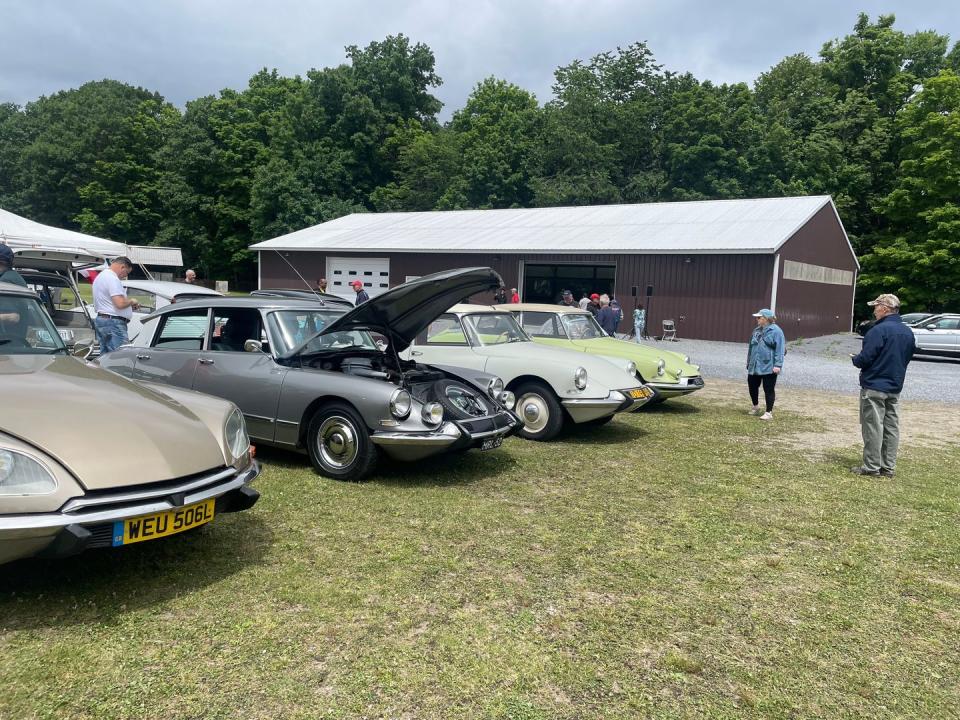
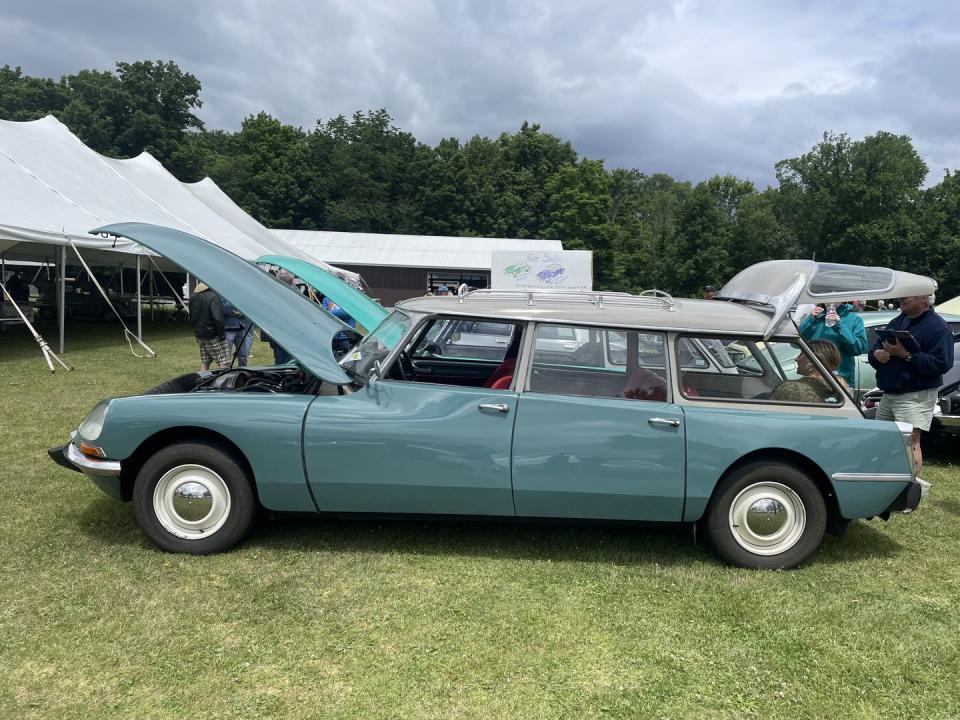
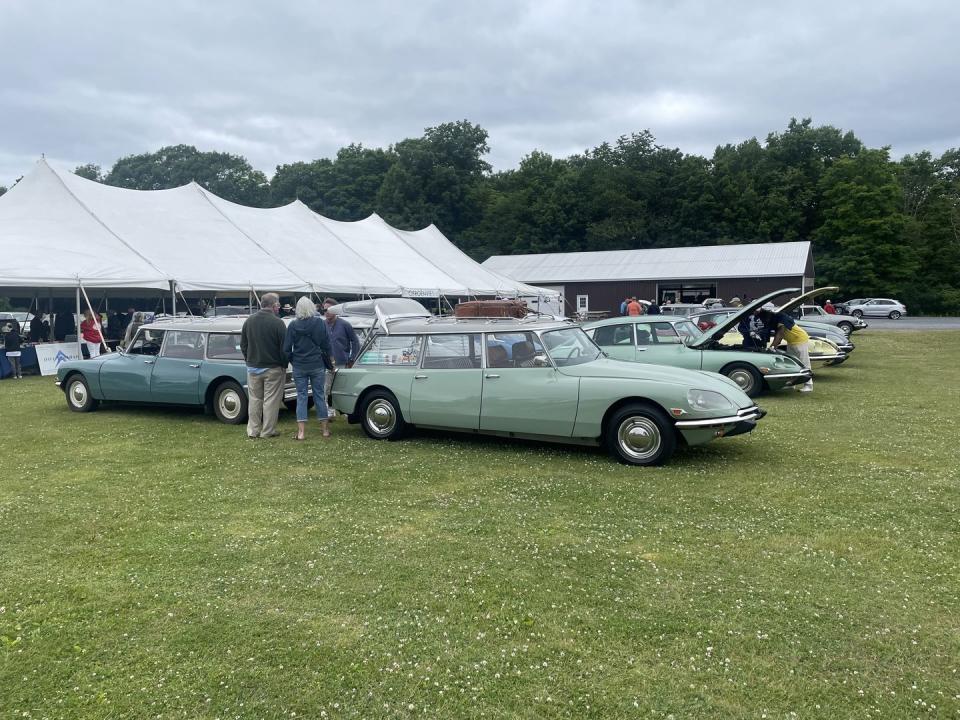
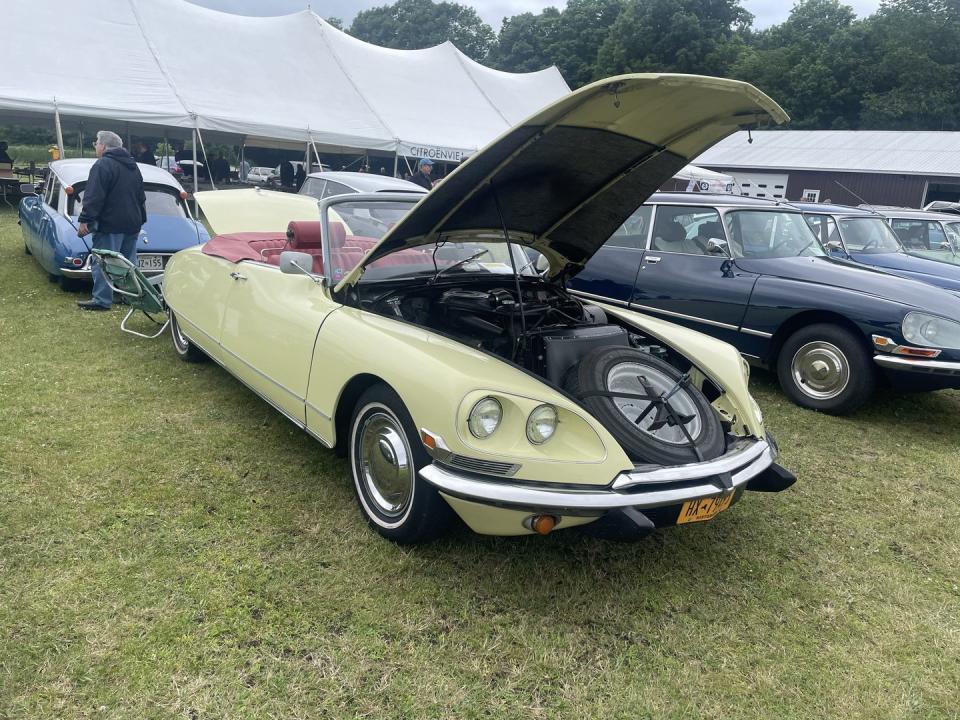
Along with wine and cheese, the DS, produced from 1955-1975 is something of which the French are most proud, as are all of today’s owners. Surveying a field with sedans, Safari wagons and a lone convertible, one can’t help thinking, If it is wrong to covet thy neighbor’s cars, then I don’t want to be right.
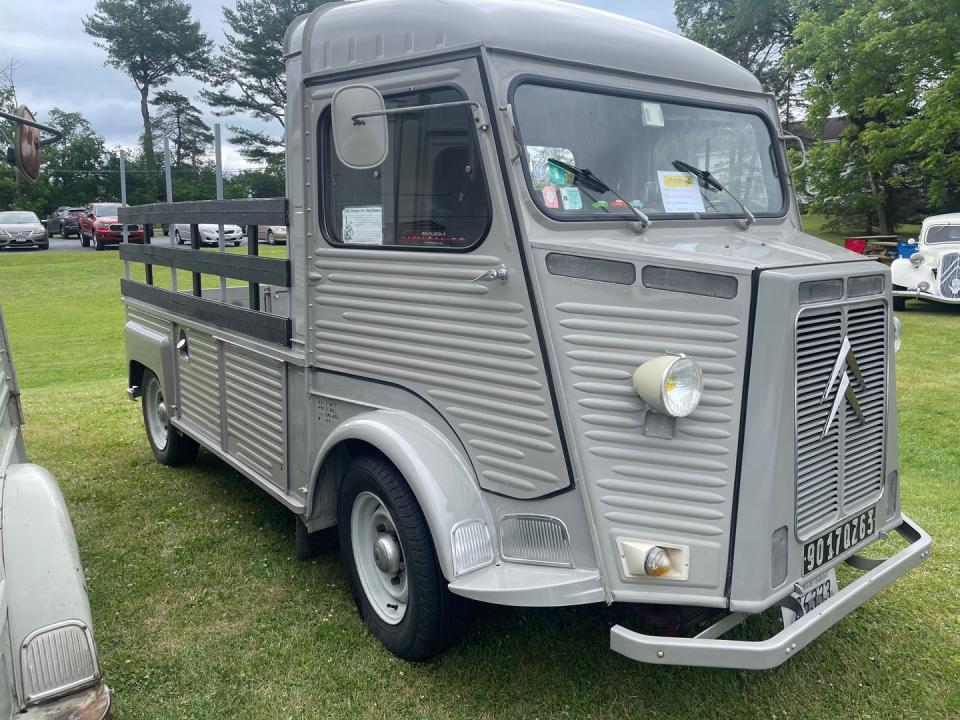
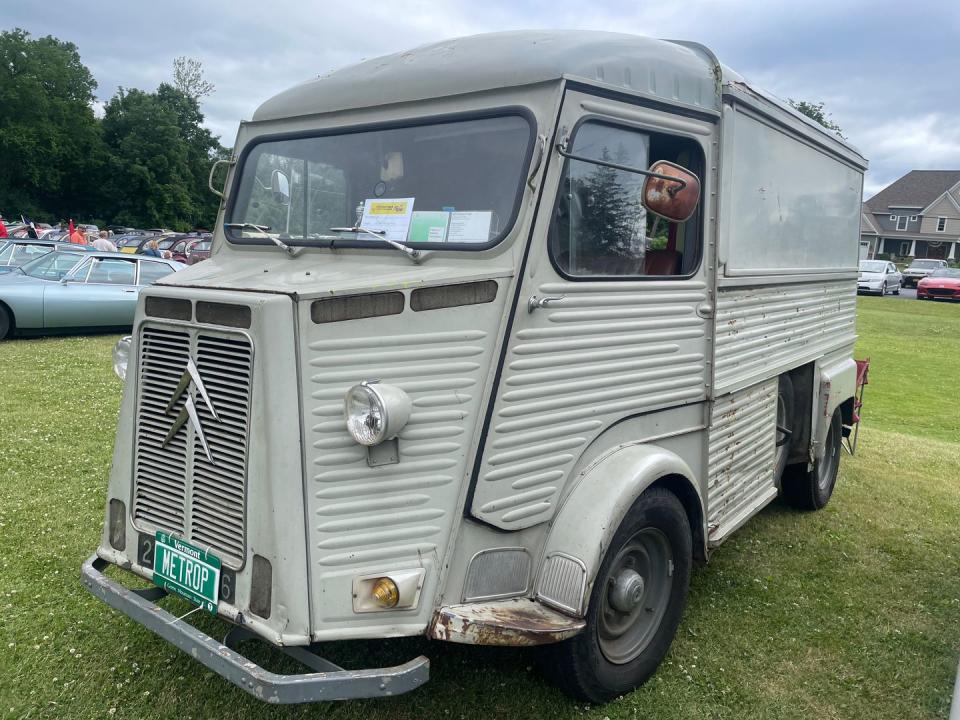
Less well represented but deeply desirable nevertheless, were two Citroën H-Vans, now in great demand around the world for duty as food trucks, espresso bars and other mobile (or, better yet, stationary) enterprises wishing to telegraph stylish retro-hipness. Bring your auxiliary checkbook if you want to buy one but don’t expect to make a quick getaway–50 mph is about all an H-Van can aspire to.
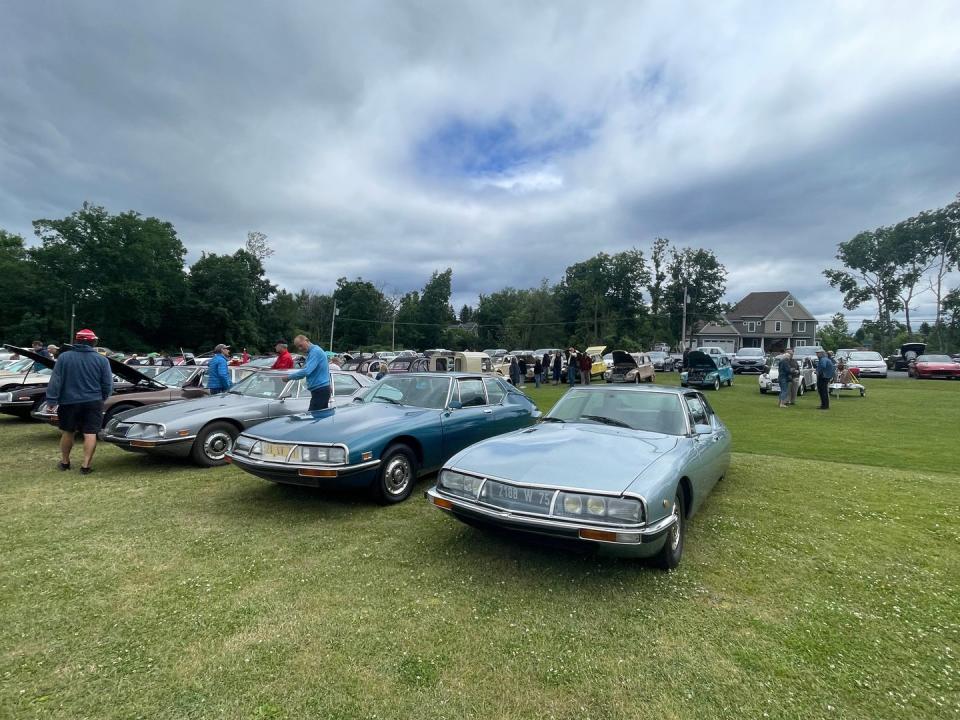
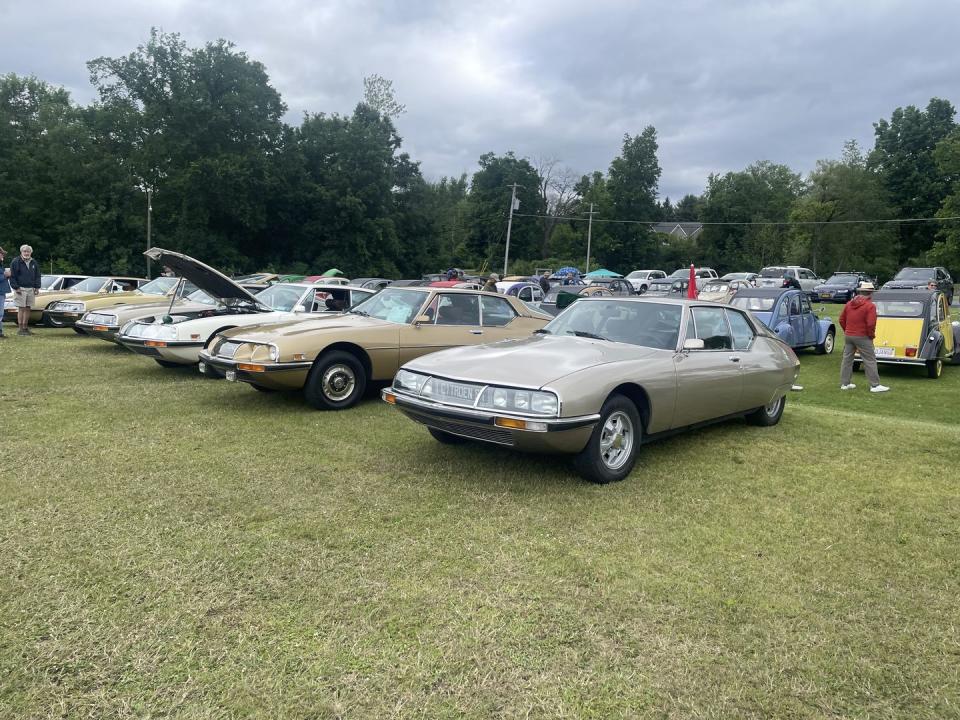
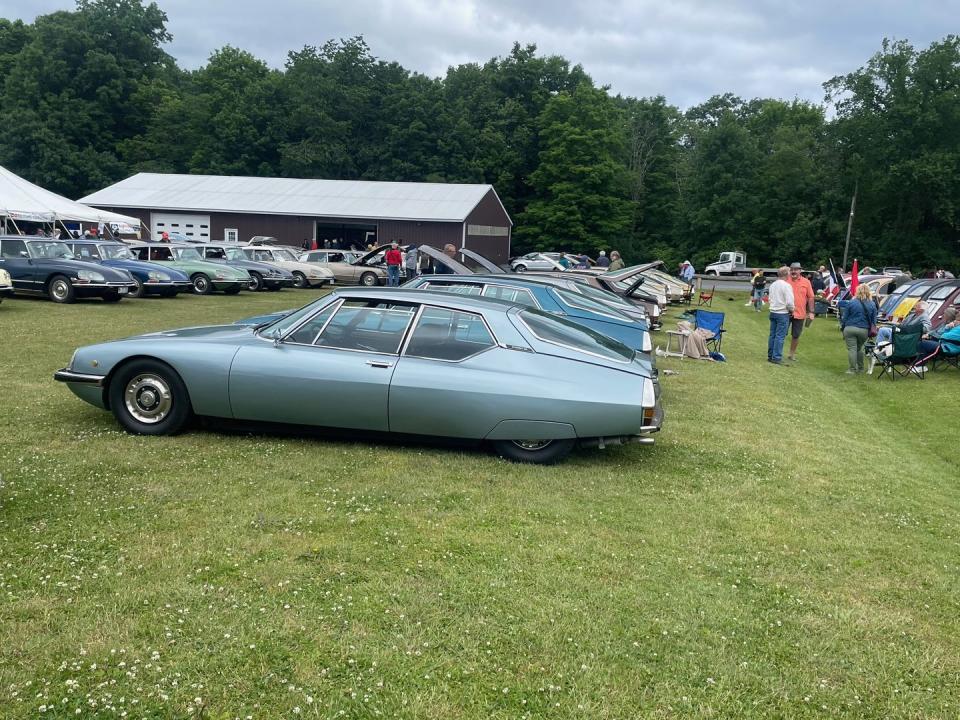
Which brings us to some more rapid numbers in the Citroën quiver, notably the glorious SM coupe that began conceptually in the early 1960s as a DS sports variant, only to emerge more than a decade later as a full-blown new model. It attempted to capitalize on the company’s brief dalliance with Maserati, which it bought in 1968 and sold in 1975. Maserati’s V6 engine, though not the fastest, gave the futuristic dream liner the poke Citroëns had long been lacking. It also got revised hydro-pneumatic suspension and braking systems that contributed to the spec of the CX model that would replace the DS. Many SMs still exist, all of them breathtaking, beautiful and hideously expensive to restore. Indeed, a handbill making the rounds at the show purported to offer a green five-speed, non-runner for free to anyone willing to go to Long Island’s tony East End to pick it up. Even for free, many double chevron veterans opined on how it could only be a money losing proposition, even with the best examples selling for $75,000 and more.
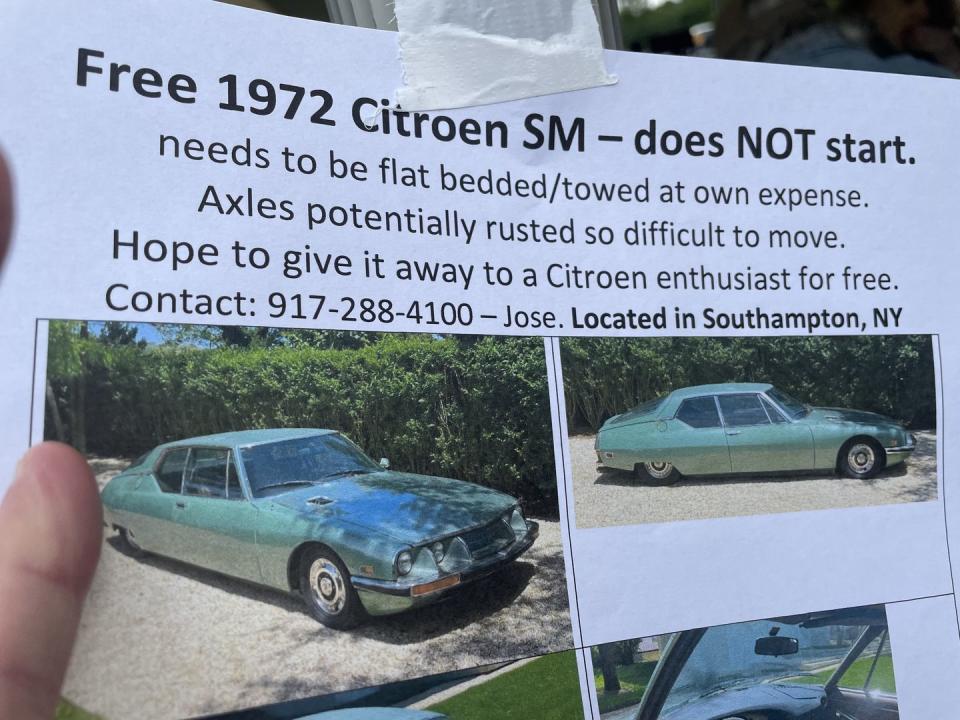
Though CXs were never sold by the factory in the States, the car was a suitably futuristic replacement for the DS and many made their way into America, several of which turned out for the Rendezvous, along with a handful of GS models, a smaller take on the CX shape and spec but with a robust air-cooled boxer engine upfront. Among the more interesting GS in attendance, the only remaining GS break (wagon) decorated by the factory for use in the 1972 Munich Olympics, discovered in Venice and currently offered by Morton Street Partners. A solitary XM, the CX replacement, was in attendance. Though superficially oddball enough to be a suitable follow-on, many felt at the time of its introduction in the 1990s that it had been watered down by Peugeot, which took over Citroën in the mid-1970s and worked through the years to integrate its offering with its own stodgier and decreasingly French feeling offerings, a depressing trend that has resulted in a 21stcentury with few Citroëns or Peugeots of real distinction.
Though he arrived with his very handsome 1975 Peugeot 504 cabriolet, which he imported from France 22 years ago, Mark Diamond, an aviation consultant from Arlington, MA, said he considers himself “more of a Citroëniste than Peugeotiste, just because of the innovation and weird factor.” First gripped by the Citroën bug when his parents’ friends showed up at his childhood home in a 1960s DS, he doesn’t own a Citroën but is happy to turn up at the annual rendezvous, along with a dozen other Peugeot owners and a handful of Renaults, plus one Volvo 544 and some other non-French cars, drawn by his enthusiasm for the named marque and the Rendezvous’ accepting spirit. Several attendees are members of the Arlington Classic Car Club, a group to which Diamond belongs, with members not just from the Boston suburb it is named after, but also from around the country and some across the sea. The club embraces the accepting, non-sniffy attitude of the Citroën gathering. “I think people here appreciate the fun factor as opposed to any sort of competitiveness at his event.” This world view informs the ACCC, he thinks. “We do have a unique esprit de corps and the theme is that we have no rules, no structure and no hierarchy whatsoever. And that’s a deliberate strategy, we decided to keep it as loose and fun as possible. And so we stay away from any planning and keep everything ad hoc.”
“There’s an old expression that dogs and their owners tend to resemble each other over time and I think probably the same applies to cars. Citroëns and French cars in general tend to be kind of offbeat and a little strange and kind of weird and innovative and very, very interesting. I think you could say the same about their owners. They're a little bit offbeat, you know, some are a little weird and I would include myself in that category. But interesting and fun people to be around.”
Exactement, say we.
You Might Also Like

 Yahoo Autos
Yahoo Autos 